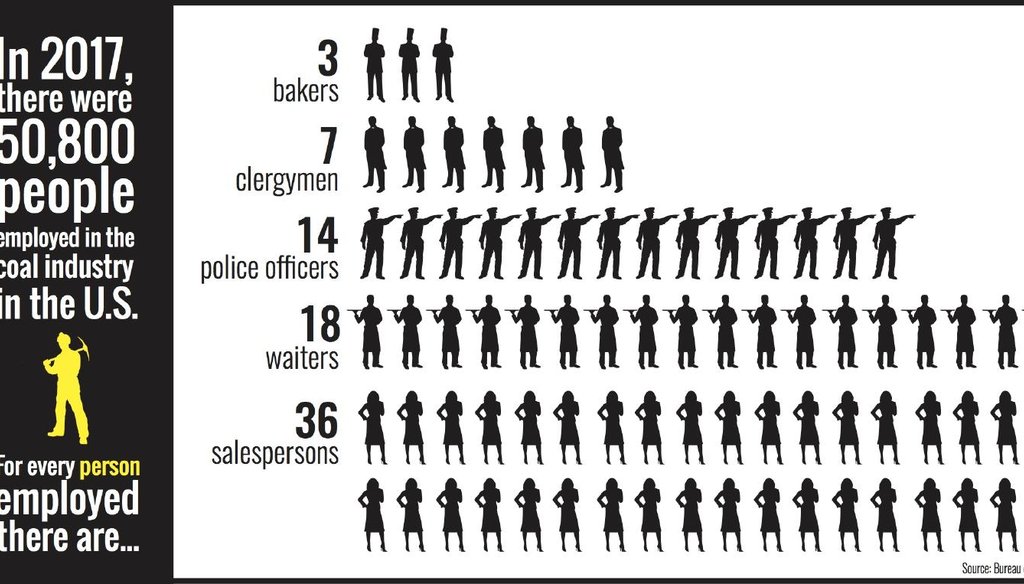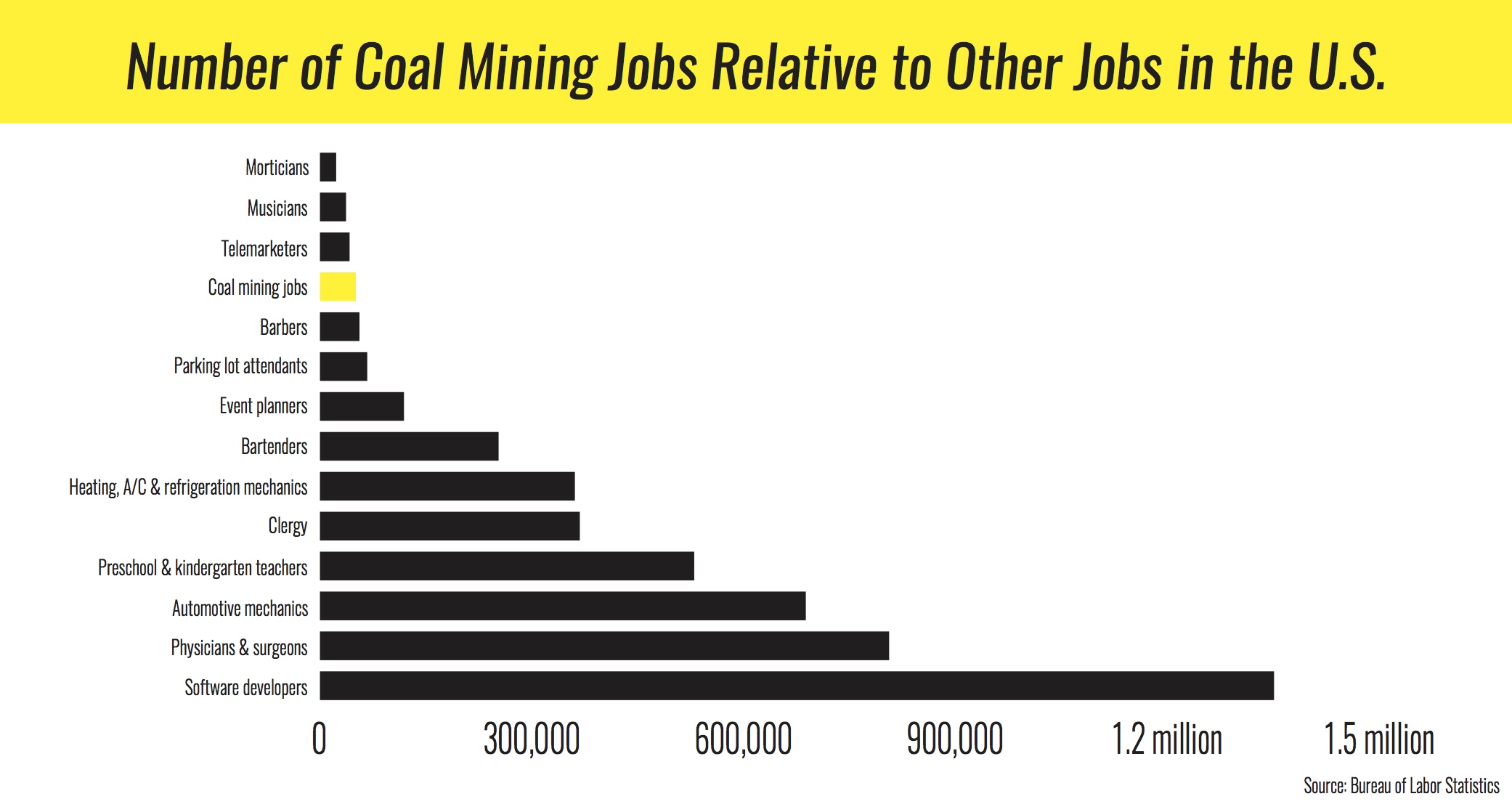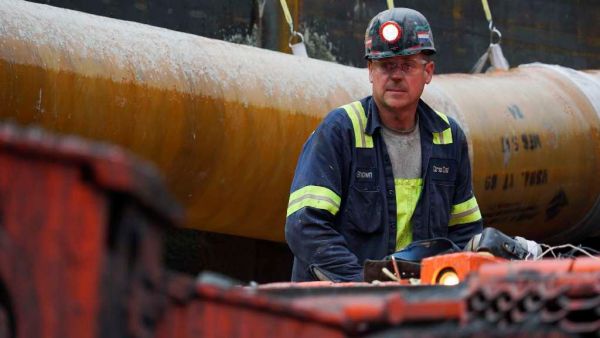Get PolitiFact in your inbox.

Fewer than 51,000 people are employed as coal miners in the United States, but President Donald Trump keeps talking about them. (Graphics by Haley Bracken)
At an event to tout his "Made in America" agenda, President Donald Trump took a moment to applaud his administration’s success in stopping the long-term decline of the coal industry.
"We picked up 45,000 mining jobs in a very short period of time," Trump said. "Everybody was saying, 'Well, you won’t get any mining jobs.' We picked up 45,000 mining jobs. Well, the miners are very happy with Trump and with Pence, and we’re very proud of that."
Trump’s numbers are off-base.
In June, Trump’s Environmental Protection Administration chief, Scott Pruitt, said something similar. "Since the fourth quarter of last year until most recently, we've added almost 50,000 jobs in the coal sector. In the month of May alone, almost 7,000 jobs." We rated that Mostly False.
In fact, the Bureau of Labor Statistics counts 50,800 total coal mining jobs in the United States. The increase since Trump took office? 800.
Rather than fact-check such a similar claim again, we thought we’d do something a little different: We decided to put the size of the coal-mining sector in the context of the broader economy. To determine the comparative size of various occupations, we used Bureau of Labor Statistics data to pull the employment figures for a wide variety of jobs -- both common jobs and rarer jobs, blue-collar jobs and white-collar jobs.
In the accompanying infographic, we show employment figures for 2016 in a selection of occupations, ranging from the smallest number of workers at the top to the largest at the bottom.
It is perhaps understandable why Trump has given so much attention to the coal industry. In a number of places where he fared especially well in the 2016 election -- notably Kentucky, West Virginia, and the western portion of Pennsylvania -- coal is a significant driver of the economy, despite the industry’s long term decline.
And declines in employment in such areas have brought real hardship.
As recently as 1986, coal mining employment totaled 178,000. So it’s been a 71 percent decline in coal employment just over three decades. Analysts generally attribute this shrinkage to such factors as stiffer competition from natural gas and advances in technology.
Some caveats: Our figure for coal-industry employment (50,800) refers to various jobs within the coal industry, whereas the other items we list refer to occupations, which may be in any industry. (The number of people actually working underground in mines would be smaller.)
In addition, the coal industry has argued that the BLS figures undercount total coal-industry employment due to seemingly arbitrary definitions of what qualifies in a given category and what doesn’t. However, the same problem would likely affect many of the other occupations on our list as well.
In any case, our comparison at least gives some sense of the relative economic clout of coal mining and other economic pursuits.
Here’s the full list with links to the original data.
Retail salespersons: 1,831,000
Software developers: 1,351,000
Waiters and waitresses: 949,000
Physicians and surgeons: 806,000
Police and sheriff's patrol officers: 709,000
Car mechanics and technicians: 688,000
Human resources workers: 631,000
Preschool and kindergarten teachers: 530,000
Real estate agents: 493,000
Clergy: 368,000
Heating, air conditioning, and refrigeration mechanics and installers: 361,000
Credit counselors and loan officers: 351,000
Paralegals and legal assistants: 351,000
Bartenders: 253,000
Librarians: 140,000
Bakers: 138,000
Lodging managers: 124,000
Event planners: 119,000
Public relations specialists: 107,000
Probation and correctional treatment specialists: 100,000
Parking lot attendants: 67,000
Statisticians: 65,000
Veterinarians: 65,000
Baggage porters, bellhops, and concierges: 56,000
Barbers: 56,000
Coal mining jobs, June 2017: 50,800
Travel agents: 46,000
Massage therapists: 45,000
Photographers: 43,000
Telemarketers: 42,000
Musicians and singers: 37,000
Morticians, undertakers, and funeral directors: 23,000
Astronomers and physicists: 20,000
Our Sources
Bureau of Labor Statistics, all employees in coal mining (seasonally adjusted), accessed July 19, 2017
Federal Reserve Bank of St. Louis, FRED database, accessed July 19, 2017
Bureau of Labor Statistics, Standard Occupational Classifications, accessed July 19, 2017
Energy Information Administration, "Table 18. Average Number of Employees by State and Mine Type, 2015 and 2014," accessed July 19, 2017
New York Times, "Coal Mining Jobs Trump Would Bring Back No Longer Exist," March 29, 2017
Washington Post, "The entire coal industry employs fewer people than Arby’s," March 31, 2017
NBC News, "Where Did Trump Dig Up 45,000 Mining Jobs?" July 17, 2017
PolitiFact, "Are coal mining jobs up by 50,000 since last year? Not exactly," June 5, 2017
Email interview with Gary Burtless, senior fellow at the Brookings Institution, July 19, 2017
Email interview with Tara Sinclair, George Washington University economist, July 19, 2017
Email interview with Jed Kolko, chief economist with the jobs site Indeed, July 19, 2017












































